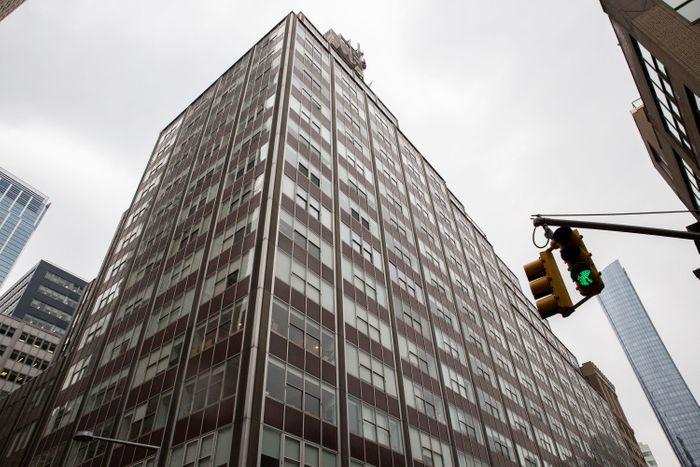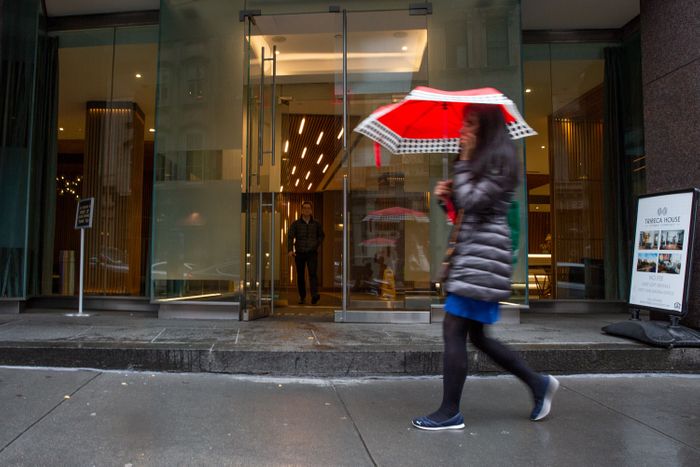BY RACHEL HOLLIDAY SMITH | They’re making a federal case out of it.
A Downtown landlord is taking a tenant fight to the U.S. Supreme Court — asking the nation’s highest tribunal to consider ruling against rent regulation itself.
Attorneys for Clipper Equity have filed a petition to the high court seeking review of a 6-to-1 June ruling by the New York Court of Appeals, the state’s top court, which found that tenants at 50 Murray St. should have had rent-stabilized leases for years because the landlords benefited from a tax break.
That decision paved the way for thousands of Lower Manhattan tenants to claim stabilized leases and years of rent overcharges.
Taking the Fifth
Clipper contends the New York judges’ decision violates the U.S. Constitution’s Fifth Amendment, which states that private property cannot “be taken for public use, without just compensation.”
The petition questions whether enforcing rent regulation is a form of the court taking property — “contrary to decades of settled law and practice,” according to the Oct. 26 filing from D.C. law firm Covington and Burling, which represents the landlord.
A spokesperson for the firm said in a statement the case “involves important property-rights issues” that have not yet been resolved by the U.S. Supreme Court.
“Courts, just like other branches of government, should not be able to wipe out longstanding property rights without providing just compensation. Yet that is precisely what happened in this case,” the statement read. “We believe the time is right for the [Supreme] Court to speak decisively on this issue.”
Attorneys for the building’s tenants recently filed papers opposing the petition, saying the court “lacks jurisdiction to review” interpretation of a state law.
The appeal follows two federal lawsuits recently filed to challenge the constitutionality of New York’s rent-regulation law, following an expansion of the regulations this summer that sharply restricts how much landlords may raise rents.
One case, brought by the law firm Mayer Brown on behalf of a group of property owners and two associations of landlords, was filed in July. The other, brought on behalf of a group of landlords, also by Covington and Burling, was filed last week.
Those suits were filed in federal district court, where they likely remain years away from affecting the law of the land, as opposed to a potential Supreme Court decision.
An Uphill Battle
The chances of the Murray St. case being taken up by the justices appear slim. Only about 80 of 7,000 or 8,000 petitions made to the Supreme Court are heard every term, according to SCOTUSblog.
And even if the case is heard, it will be difficult to win, according to Richard Leland, a longtime real estate attorney with Akerman LLP and a member of the Real Estate Board of New York.
He believes precedent is not on landlords’ side. A landmark 1978 Supreme Court case over development at Grand Central Terminal determined “depriving a property owner of the highest and best use of his or her property is not a regulatory taking,” Leland noted.
In other words: Reducing the maximum amount of money an owner can get out of a property is not the same thing as seizing it unconstitutionally.
The so-called takings clause of the Fifth Amendment also was central to the anti-regulation argument made by a group of Upper West Side homeowners that the Supreme Court declined to hear in 2012.
“The concern is, at least if I were a plaintiff, is that it’s a very fact-specific analysis,” said Leland. “It means a court making a finding a fact. And the Supreme Court usually does not overturn findings of fact. It deals with findings of law.”
What Me Worry?
At 50 Murray St., a 389-unit building in Tribeca, the tenant who lent his name to the case’s title, John Kuzmich, hasn’t given the Supreme Court petition much thought.
“At this point, I’m calm,” he said. “Why worry about something that may never come?”
Kuzmich and his neighbors have been involved with a legal battle with Clipper since 2016 when they first sued the landlord over an obscure 1990s-era tax abatement, known as 421-g, the building had received.
The tenant argued Clipper was supposed to give rent-stabilized leases in return for that tax break. In June, the Court of Appeals sided with the residents.
That ruling set in motion a flurry of lawsuits all over Lower Manhattan — where the 421-g tax break was used — from tenants seeking stabilized leases and cash back for rent overcharges.
Serge Joseph, Kuzmich’s attorney, told THE CITY he’s now representing close to 100 individual tenants. At another Downtown building, 10 Hanover Square, tenants and their attorneys have brought a class-action lawsuit that could affect 493 units.
According to an analysis by THE CITY of tax records, the total number of apartments in Manhattan affected by the June ruling is about 6,000.
Despite the past court record on rent-regulation cases, the landlord at 50 Murray St. may see a unique opportunity, Leland said, with a Supreme Court that “is a little bit more skewed towards what some people view as the rights of property holders, as opposed to government regulation.”
He added, “Whether that bears out or not, it’s hard to tell.”
This story was originally published by THE CITY, an independent, nonprofit news organization dedicated to hard-hitting reporting that serves the people of New York.




Be First to Comment